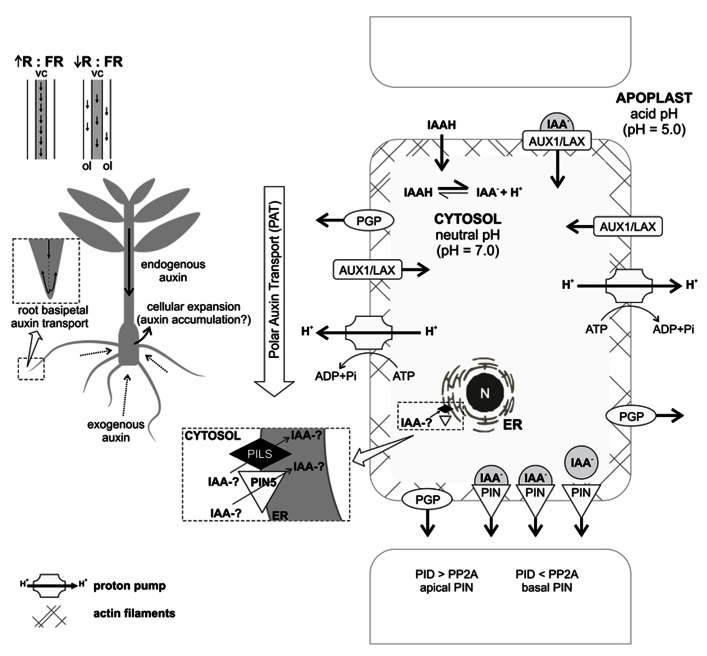FIGURE 2.
Concept of auxin transport processes probably involved in AR. Active, polar, and basipetal auxin transport contributes to auxin accumulation in the rooting zone of a cutting. Endogenous auxin is transported through the stem in an active, polar, and basipetal way. In daylight, when there is high red:far-red ratio (R:FR), the transport is mainly through the central cylinder (vc). In shade conditions, with low R:FR ratio, a less efficient route by the outer cell layers (ol), is preferred. When exogenous auxin is applied to the medium, it is absorbed by diffusion, which can cause cellular expansion in the basal part of the plant, perhaps due to auxin accumulation. Once adventitious roots are established, they provide a follow up to stem basipetal transport, continuing through the stele as acropetal transport in roots and then basipetal through the subepidermal cell layers of the newly formed organs. Intercellular auxin transport involves specific carriers: AUX1/LAX proteins, related with auxin influx; PGP proteins, related with auxin efflux and lateral transport; and PIN proteins, which have an asymmetrical distribution and allow directed auxin efflux. The PIN correct localization in the cell and the route of the auxin flow is determined by the balance between the kinase protein PID and the phosphatase PP2A. Concerning intracellular transport, auxin can be transported into the endoplasmic reticulum (ER) by the action of PILS proteins and PIN5, which reduce free auxin levels and increase auxin conjugates. It remains to be elucidated if auxin conjugates can be formed into the ER or just in cytosol. For more details, see text. N – nucleus; IAA-? – auxin in free or conjugated form.

